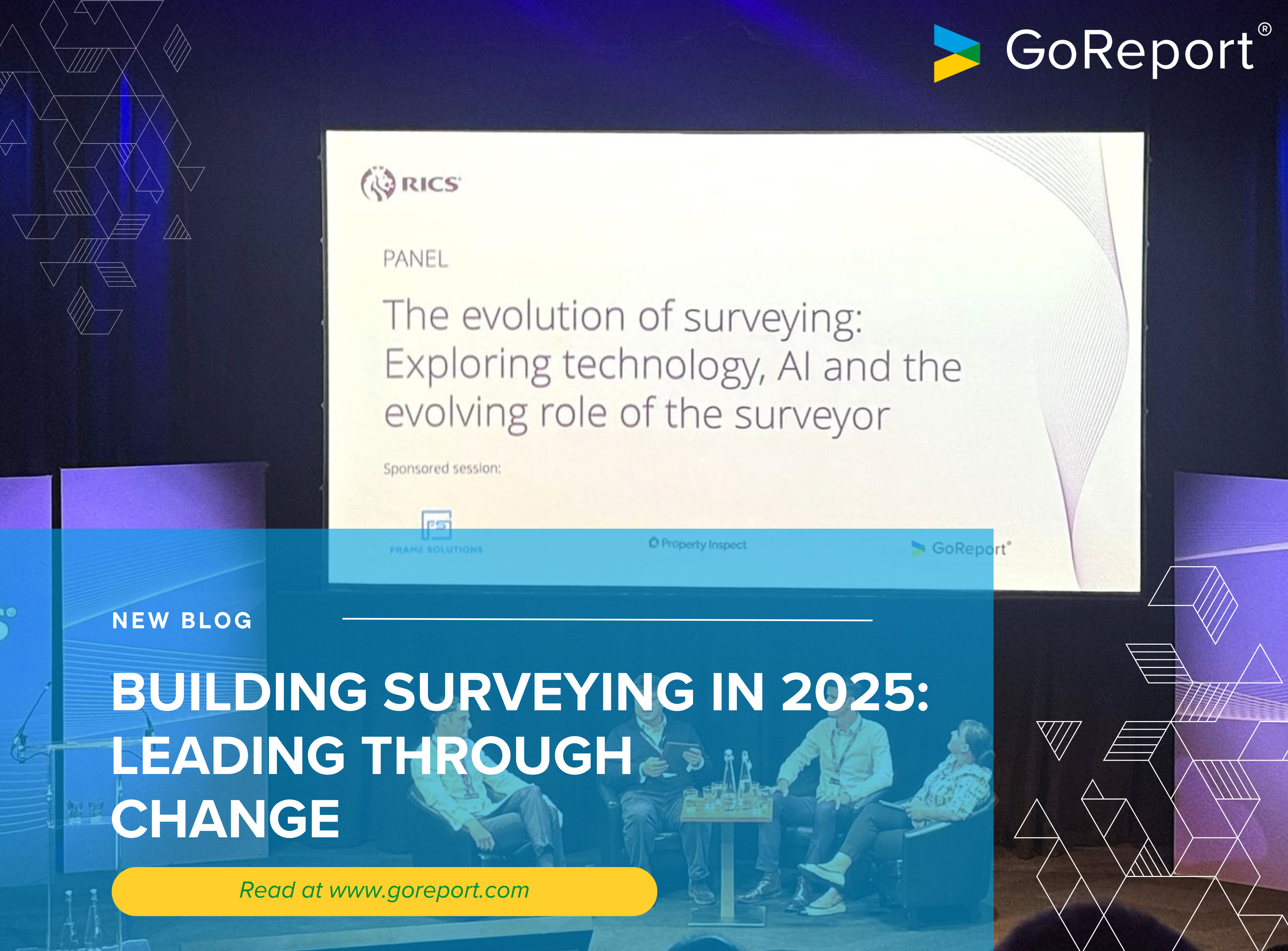Building Surveying in 2025: Leading Through Change

The building surveying profession is undergoing its most significant transformation in decades. Regulation is tightening, technology is advancing at pace, and the expectations placed on surveyors by clients, by government, and by the public are shifting rapidly. The RICS Building Surveying Conference uncovered the many pivotal changes that are quickly altering how surveyors work, advise, and grow within their profession.
With nearly 500 professionals in the room – the largest audience in recent years – the event didn’t just reflect on where the industry stands today. It challenged surveyors to think more strategically about where it’s heading, and what kind of leadership it needs to get there.
Opening remarks from Helen McKeown MRICS, Technical Director at AECOM, set the stage for a day that challenged surveyors to think beyond compliance and step into leadership. It was noted that LionHeart, the charity supporting RICS professionals and their families, was experiencing a surge in demand for its services, reflecting the fact that surveyors are feeling the strain of the aforementioned turbulence.
It’s undeniable that the surveying profession is standing at a critical juncture impacted by significant market turbulence – but where do we go from here?
Economic Outlook: Reading Between the Lines
We’ve entered an era where uncertainty is the baseline, not the exception. Jennet Siebrits, Head of Research at CBRE, didn’t soften the picture: “It’s going to be a rocky road,” she warned, citing ongoing geopolitical instability, rising tariffs, and the possible return of Trump to the White House as just some of the key changes impacting global confidence.
Despite better-than-expected economic performance in 2024, 2025 is proving less predictable. UK GDP growth is underwhelming, yet there are signs of resilience: inflation has cooled, interest rates are easing, and consumer spending is set to rebound if confidence returns. For surveyors, this means adapting on the fly and interpreting economic signals with commercial awareness.
Siebrits made it clear: clients don’t want just economic data, they want clear and precise advice. The real question is whether surveyors can turn big-picture trends into smart decisions that protect and grow investments while unlocking future opportunities.
Grenfell and Fire Safety: Redefining Responsibility
The profession’s response to fire safety is being fundamentally redefined, with the margin for error shrinking and the expectation of government responsibility growing.
The tragedy’s impact has been both global and transformative, sparking 58 key recommendations in the government’s response. The redefinition of higher-risk buildings, the re-ignition of the Single Construction Regulator, and the introduction of a mandatory Fire Safety Strategy mark significant regulatory shifts that surveyors cannot afford to overlook. A pointed question was raised by speaker David McCullogh FRICS, Chair of the RICS Fire Safety Working Group: Why does the higher-risk definition primarily focus on height, rather than vulnerability of those inside the building? For example, should care homes and schools not be considered high-risk in terms of safety?
McCullogh challenged delegates to question long-standing assumptions in regulation, making it clear that ticking the compliance box is no longer good enough. The profession must go beyond what’s written in policy, and surveyors must become advocates for better, safer practices, even if it means challenging the status quo.
With 57 of the 58 Grenfell recommendations being accepted by government, surveyors must embed fire safety at every project stage, anticipating future regulations and translating them into practical, ethical advice for clients. Simply put, surveyors must prepare for heightened scrutiny and, therefore, expectations of accountability.
Navigating the Latest Defects: Modern Methods of Construction
The surveying industry is well overdue for a construction mindset shift, and Modern Methods of Construction (MMC) will test how willing we are to move with the times. Jay Ridings MRICS of TFT Ltd and Ash Vipat of Wintech offered a candid assessment: the industry’s slow uptake of MMC is not due to lack of benefits, but a resistance to unlearn old habits.
Off-site manufacturing, volumetric construction, and cross-laminated timber present clear benefits, including lower waste, faster build times, and improved site safety. Yet too often, these methods are applied without true understanding, not to mention the fact that misconceptions about cost, logistical challenges, and a lack of familiarity are slowing progress.
“There needs to be absolute rigorous planning – we’re dealing with methods that traditional constructors may not be used to,” Ridings warned.
The message to surveyors was clear: embrace MMC with careful planning and precise coordination, or risk falling behind in an industry increasingly defined by sustainability and efficiency. This means investing the time to deeply understand new systems and advocating for smarter construction processes that align with both sustainability and performance outcomes. Anything less, and we risk embedding future problems into today’s builds.
Addressing the Changing Demands of TDD
TDD is evolving from a technical process to a strategic advisory function. While the core purpose of Technical Due Diligence remains constant – identifying risks and providing clarity during property transactions – the scope and expectations are growing. Environmental considerations, building fabric assessments, and changes within regulatory compliance checks are now fundamental parts of the TDD process. Mike Turner, Director at Hollis, highlighted that the impact of the Grenfell Report is expected to redefine building safety standards, pushing surveyors to use a more forensic approach to their assessments.
He stressed that surveyors are no longer just inspectors; they are life cycle advisors who must guide clients through risk mitigation, sustainable asset management, and value enhancement. The role now demands a sharper focus on sustainability and energy performance, with growing scrutiny over PV systems, EV chargers, and the condition of power supplies. Turner also pointed out that flood risk appraisals are becoming more common, driven by updated Environment Agency mapping that increased the number of buildings in high-risk areas by 43%.
The call to action was unmistakable: surveyors must not only be technically proficient but commercially savvy, with a firm grasp of the changing regulations and sustainable building practices. To lead in this space, Turner encouraged surveyors to continually upskill and stay ahead of emerging challenges, not just respond to them. As the built environment shifts towards resilience and sustainability, TDD is poised to be a frontline service that defines the standard for safe, compliant, and sustainable properties.
Technology and AI: Power with Responsibility
Surveying isn’t being replaced by technology – but it is being redefined by it. As tools like AI, digital data capture, BIM, and drones become more embedded in the profession, the message is to embrace them with both curiosity and caution.
Led by Christopher de Gruben FRICS, panelists Dan Milligan MRICS, Sián Hemming-Metcalfe, and Louis Blaxill, explored the power of technology and AI in surveying, with a strong emphasis on its potential to redefine the role of the surveyor. It’s clear that as efficiency and use of AI increases, so does the need for professional, human judgement. After all, the real question isn’t if technology will reshape the profession, but how we choose to shape it.
There’s also a generational shift underway. Younger professionals, entering the field with a digital-first mindset, have the opportunity to challenge outdated processes and drive smarter, tech-enabled practices. But while tech-savviness is a strength, experience and on-the-ground learning still matter. Striking the right balance between innovation and professional development will be key to shaping the next generation of high-performing surveyors.
“I think it’s also an exciting opportunity for younger generations. There’s no replacement for time enrolled, getting that experience and that’s something that people have to go through and learn,” said Louis, “But actually, an angle they can bring now is that tech-enabled mentality where you can make a real impact on the firm if you go right, well, let’s bring everyone into this conversation and make sure we’re adopting tech.”
Beyond specific tools, the broader message was clear: technology is not a threat to the profession, but it’s an amplifier of expertise. Used responsibly, it can remove low-value, repetitive tasks and allow surveyors to focus on what truly matters: delivering accurate insights, maintaining standards, and offering trusted advice to clients.
“Removing those low-level tasks is going to help people. It’s going to draw people in. People don’t want to do these mundane tasks, they want to provide the most value to clients,” Milligan noted.
The profession doesn’t just need more tools. It needs surveyors who understand both the power and the limitations of technology, and who are willing to take an active role in how it is applied. In an AI-driven future, the human element is not optional. It’s more essential than ever.
Closing Statement
The RICS Building Surveying Conference 2025 showcased a turbulent, yet exciting time for surveyors. The central question posed across sessions was not “what’s changing?” but rather “what will we do about it?” The surveyor’s role as a trusted advisor has never been more vital, with those in the industry being asked to think more critically, act more strategically, and engage more deeply. Staying aware of changing regulations, client expectations and technology advancements is key to not just becoming, but staying a major player in the industry.
Survey smarter. Stay compliant. Use GoReport to streamline your surveys today. Try our free trial – no commitment or credit card required.








